Charleston Currents #11.33 | July 1, 2019
REVOLUTIONARY. Contributing photographer Rob Byko snapped this image of South Carolina reenactors posing with people visiting Fort Moultrie on Carolina Day (June 28) to remember the big patriot victory over a British fleet some 243 years ago. Cannon were fired. Children were thrilled. A great day in the state’s history was remembered.
 FOCUS, Smith: What I’ve learned in 23 years as an LGBTQ Charleston Realtor
FOCUS, Smith: What I’ve learned in 23 years as an LGBTQ Charleston Realtor
COMMENTARY, Brack: Culture of ignorance on rise in America
IN THE SPOTLIGHT: South Carolina Ports
ANOTHER VIEW: How to beat the Charleston heat
GOOD NEWS: Magnolia hosts 7th annual History Fair on July 6
FEEDBACK: Send us your thoughts
MYSTERY PHOTO: Different view of Charleston site
S.C. ENCYCLOPEDIA: The King’s Highway
CALENDAR: Celebrating the Fourth of July
FOCUS
What I’ve learned in 23 years as an LGBTQ Charleston Realtor
By Charlie Smith, special to Charleston Currents | I moved home to Charleston 23 years ago after two years at Clemson working on a master’s degree in planning and 12 years of living in Miami. Soon after returning, I walked into Dudley’s on King Street and ran into an old acquaintance who had lived up the street from me in graduate school. He asked what I intended to do for a living.
![]() I told him that I intended to establish South Carolina’s first openly gay-owned and -operated real estate brokerage, marketing primarily to the LGBTQ community. His immediate response was “You’ll never make a dime in this town!” I never forgot those words. I immediately set out to prove him wrong.
I told him that I intended to establish South Carolina’s first openly gay-owned and -operated real estate brokerage, marketing primarily to the LGBTQ community. His immediate response was “You’ll never make a dime in this town!” I never forgot those words. I immediately set out to prove him wrong.
Real estate was a tight-knit business community back then. It was not all that welcoming to people who had no intention of working under an established broker, but rather who planned to start an office from scratch. It was also 1996 and the internet was in its infancy as a real estate tool. What that meant was that our new venture, CSA Real Estate Services, would have to be built by connecting real people interested in a common cause rather than by sending out a mass email, a tool that did not yet exist broadly. I came to realize that the common cause (and our company’s specialization) needed to be that of protecting LGBTQ families and individuals from discrimination in the real estate, insurance and finance industries.
When our first website went up in 1996, it included a lengthy article on exactly how LGBTQ people could be quickly disadvantaged in a real estate transaction if they were unaware of dangerous legal pitfalls, such as an attorney not asking about the titling of property as joint tenants with rights of survivorship to prevent disgruntled heirs from seizing half of an LGBTQ couple’s assets following a death. Straight Realtors who wanted a share of the LGBTQ market would often say things like “I would never discriminate against a gay person,” but in reality, they had no idea at all how to legally protect LGBTQ people in a real estate transaction. They thought that not being mean was sufficient.
At the time, Charleston had a sizable LGBTQ community, but it was deeply closeted and somewhat self-destructive. At meetings of the Lowcountry Gay and Lesbian Alliance in 1996, last names on name tags were prohibited because members were afraid of being outed at work. This was no way to run an LGBTQ community. A small group of us who recognized that problem decided to do something about it. In 1998, the Alliance for Full Acceptance was born. Charleston and South Carolina have never been the same. CSA Real Estate Services became an advocate and sponsor of many of the early efforts that sprang from the founding of AFFA and continues to support its mission today.
But nothing has changed our world more rapidly and more completely than the instant availability of vast amounts of knowledge that exploded with the advent of the internet. LGBTQ people suddenly had the ability to define themselves to the world instead of being marginalized by it. The networks we began to build back then continue to tell us who is working for and against our LGBTQ citizens. They help us mobilize responses. And they help us celebrate who we are. This was all new in 1996.
Much has changed in 23 years, including the establishment of the legal right to marry, but sadly LGBTQ people can still have their wedding announced in the morning paper and be fired from their job and receive an eviction notice by the close of the business day because of that announcement . That’s why CSA Real Estate Services is still here and still engaged 23 years later.
As Frederick Douglass wrote, “Power concedes nothing without demand and struggle. It never has and it never will.”
West Ashley resident Charlie Smith is broker-in-charge of CSA Real Estate Services.
- Have a comment? Send to: editor@charlestoncurrents.com
BRACK: Culture of ignorance on rise in America
By Andy Brack, editor and publisher | There’s a reason that a horse wears blinders: So it won’t get spooked by something weird that’s outside of its vision tunnel.
 All across our country, too many people are wearing blinders on an array of issues that is unraveling the fabric of the American way of life. We are ignoring big problems, hoping they’ll just go away. But they get worse and worse.
All across our country, too many people are wearing blinders on an array of issues that is unraveling the fabric of the American way of life. We are ignoring big problems, hoping they’ll just go away. But they get worse and worse.
Instead of proactively confronting issues from race and gun violence to immigration reform and the decay of our democracy, we keep drinking from the font of ignorance.
Where is the American spirit found in the lean and hungry Greatest Generation that won World War II and capitalized on innovation to thrust our country to become the world’s superpower? On a couch? Glued to a smartphone screen?
It’s far past time to stop wallowing in a tribalized, uncivil America and really pull together. Regardless of whether you’re conservative, independent or liberal, our way of life is at stake.
Just over 25 years ago, Time magazine art critic Robert Hughes wrote an incisive book that talked about America as a “collective work of the imagination whose making never ends” until it frays when mutual respect and the sense that we’re all in this together erodes.
In Culture of Complaint, Hughes observed, “The politics of ideology has for the last twenty years weakened and in some areas broken the traditional American genius for consensus, for getting along by making up practical compromises to meet real social needs.”
Hugues described the dangers of tribalism and intolerance: “In society as in farming, monoculture works poorly. It exhausts the soil. The social richness of America, so striking to the foreigner, comes from the diversity of its tribes. It’s capacity for cohesion, for some spirit of common agreement on what is to be done, comes from the willingness of those tribes not to elevate their cultural differences into impassable barriers and ramparts.”
 Yet in the last 25 years, Americans have retreated into algorithmic smartphones and idiot boxes that spew what they want to hear. Look around and see how the culture of complaint described by Hughes has morphed into a culture of ignorance in which major problems are ignored as people live inside personal bubbles of intellectual comfort. The corrosion is not hard to find:
Yet in the last 25 years, Americans have retreated into algorithmic smartphones and idiot boxes that spew what they want to hear. Look around and see how the culture of complaint described by Hughes has morphed into a culture of ignorance in which major problems are ignored as people live inside personal bubbles of intellectual comfort. The corrosion is not hard to find:
Immigration. The picture of a drowned father and his child in the Rio Grande River propelled the country’s leaders into a new round of finger-pointing. America is a country built by immigrants. We should be welcoming people fleeing oppression, not erecting barriers that lead to deaths and incarceration of children. We’re better than what’s now happening.
Climate change. You can’t “believe” or “not believe” in science because it uncovers facts and observations about what’s happening so we can engage in devising solutions. The globe is warming. Climate change is causing a crisis now, not in the distant future. Ignoring the consequences found by science puts everyone in peril.
Democratic institutions. Why aren’t more Americans mad that Russia meddled in the 2016 elections? Simply put, an enemy interfered with our democratic process and we mostly sit on our hands waiting for it to happen again. And what of President Trump, who may have obstructed justice 11 times as outlined in The Mueller Report? He makes light of Russia’s role in a fresh comment to his buddy, Russian President Vladimir Putin. People should be mad, not cozy.
Race. More than 150 years after a war that split America, the country still hasn’t grappled with race in our culture and daily lives. We’ve got to get beyond skin color and remember that everyone in America bleeds red, not white, brown, black or tan.
Gun violence. Too many people continue to be killed because of the proliferation of guns in America. We’ve become inured to mass shootings, a sad commentary on the state of the country. Instead of continuing to dither, people need to demand action. If lazy politicians don’t answer, vote them out.
Americans aren’t listening to each other. If we want to thwart the continued fraying of America and subdue the ignorance that’s corroding our institutions, we’ve got to unclog our ears and work collaboratively in good faith to attack the rot.
Andy Brack’s new book, “We Can Do Better, South Carolina,” is now available for $14.99 in paperback via Amazon.
- Have a comment? Send to: editor@charlestoncurrents.com
SPOTLIGHT: South Carolina Ports Authority
 Founded in 1942, the South Carolina Ports Authority (SCPA) owns and operates public marine terminals at two port facilities, the Port of Charleston and the Port of Georgetown, in addition to inland ports in Greer and Dillon, S.C. These facilities are owner-operated terminals, meaning the SCPA owns the terminals, operates all container cranes, manages and operates all container storage yards and leads all customer service functions in both the yard and the lanes.
Founded in 1942, the South Carolina Ports Authority (SCPA) owns and operates public marine terminals at two port facilities, the Port of Charleston and the Port of Georgetown, in addition to inland ports in Greer and Dillon, S.C. These facilities are owner-operated terminals, meaning the SCPA owns the terminals, operates all container cranes, manages and operates all container storage yards and leads all customer service functions in both the yard and the lanes.
SCPA promotes, develops and facilitates waterborne commerce to meet the current and future needs of its customers, and for the economic benefit of the citizens and businesses of South Carolina. In fact, SCPA facilities in Charleston, Dillon, Georgetown and Greer drive $53 billion in annual statewide economic impact and 1 in every 11 SC jobs is attributed to the Port.
- For more information, visit www.scspa.com.
- To meet all of our underwriters, click here.
- To meet all of our underwriters, click here.
How to beat the Charleston heat
By Mike Robertson, College of Charleston | There’s hot, and then there’s Charleston hot – the kind of heavy, suffocating hot that has residents wondering why they live here and visitors knowing why they don’t.
Yep, Charleston knows hot. It also knows what it’s like when you add a nice thick layer of humidity to that hot. In the South, we call it summer.
And, while most of us have adapted to the summer heat, even Southerners are susceptible to the dangerous and even life-threatening effects that extreme heat can have on our bodies.
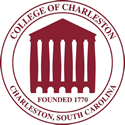 “On hot days, high humidity prevents the body’s cooling system – sweating – from working efficiently and can lead to increased core body temperature and heat-related illness (HRI),” says Brian Bossak, an associate professor of public health in the College of Charleston School of Education, Health, and Human Performance.
“On hot days, high humidity prevents the body’s cooling system – sweating – from working efficiently and can lead to increased core body temperature and heat-related illness (HRI),” says Brian Bossak, an associate professor of public health in the College of Charleston School of Education, Health, and Human Performance.
Bossak is currently working on a pilot project involving an HRI-prevention app for Hispanic migrant workers, so he’s very familiar with the ways in which heat can impact the human body. He adds that examples of HRI include heat rash, sunburn, heat cramps, heat exhaustion and heat stroke.
“The most serious illness is heat stroke, a life-threatening emergency from becoming too hot,” he says.
So, what does Bossak suggest we do to stay safe and healthy in the summer heat? Here are five ways to beat the heat – even when it’s Charleston hot.
Stay cool inside and out.
Staying out of the heat is the best (and most obvious) way to avoid overheating and HRI. Of course, most of us can’t stay inside all summer long, so when we do go outside it’s important that we stay out of the direct sunlight and mind our Ps: planning and pacing. Plan your outdoor activities for the coolest times of day, mornings and evenings, and pace yourself by starting slowly, exerting yourself gradually and taking breaks often to give your body a chance to cool down.
The best way to do this is to go into the air conditioning, take a cool shower or rest in the shade. Bossak adds that the wind – whether from an electric fan or a natural breeze – may not help your body cool down or prevent HRI if you’re already dehydrated or if HRI has already set in and you’re no longer sweating.
“In hot but windy environments, people might not feel hot or sick until it’s too late because the wind is actively moving moisture from the skin, so the skin feels a little bit cooler than it would otherwise,” he says.
Keep under cover.
We can’t always have it made in the shade, but covering up and dressing appropriately can certainly help keep us cool.
Sunglasses and a wide-brimmed hat will help protect your face and eyes from the sun, and lightweight, light-colored, loose-fitting clothing helps keep you cool in the heat. And don’t forget your sunscreen. Sunburn doesn’t cause just pain, premature aging and potential skin cancer; it affects your body’s ability to cool itself and causes you to lose body fluids. Apply sunscreen at least 30 minutes prior to going outside, and reapply every 90 minutes or so, according to the directions.
Drink to your health.
It’s no secret that staying hydrated is essential when it’s hot outside. But don’t wait until you’re thirsty to drink. Drink fluids often, throughout the day, regardless of what you’re doing.
“Dehydration can come on fast and is very common on hot days,” says Bossak, noting that not all drinks are created equally: While sugary and alcoholic drinks only cause more fluid loss and very cold drinks can cause cramping, sports drinks help replace the salt and minerals lost by sweating and water is always a safe bet.
Know how hot is hot and when.
Staying aware of the conditions and risks is just plain smart. Sure: You’ll know when it’s hot. But when it feels abnormally oppressive outside, it’s prudent to follow the local news for heat alerts and safety tips.
Better yet: Download the OSHA-NIOSH Heat Safety Tool app, which features a real-time heat index and hourly forecasts, as well as occupational safety and health recommendations from OSHA and NIOSH so you can better plan outdoor activities.
“The app takes into account both the ambient temperature and humidity, and it is the humidity factor that frequently increases HRI risk,” says Bossak. “If the app indicates elevated levels of risk, precautionary measures are suggested, and the app includes a description of different categories of HRI.”
Do your homework.
Yes, weather can be a bit unpredictable. But the risk factors, symptoms and treatments for heat-related illness are all things that you can prepare for now so you can act quickly and appropriately in the heat of the moment.
Knowing the risk factors for HRI will help you monitor the health of those around you. These include age (i.e., infants, young children and people who are 65 years or older) and health problems (i.e., overweight or illness, especially heart disease or high blood pressure – or people taking medication for depression, insomnia or poor circulation).
HRI isn’t limited to people who are working outside, of course, and we should all be aware of the signs and what to do if you or someone else starts exhibiting them. While a heat rash, sunburn or even heat cramps might be obvious, the difference between symptoms of heat exhaustion and symptoms of heat stroke can be confusing – and deadly.
“HRI can progress rapidly,” says Bossak, noting that signs of heat exhaustion can include muscle cramps; weakness; heavy sweating; cold, pale and clammy skin; nausea or vomiting; headache; dizziness or fainting – and should be taken seriously, especially when they last more than an hour.
Signs of heat stroke include high body temperature; fast, strong pulse; headache; confusion; nausea; and dizziness or loss of consciousness. If you suspect someone is experiencing a heat stroke, call 911 right away, move the person to a cooler place and use cool cloths to help cool them down. Do not give them anything to drink.
After all, when it comes to beating the heat, staying cool is one thing – staying safe and well is quite another. So, be careful!
Mike Robertson is senior director of media relations at the College of Charleston.
- Have a comment? Send to: editor@charlestoncurrents.com
Magnolia to host 7th annual History Fair on July 6
Staff reports | Explore Lowcountry South Carolina history and meet the people who promote and preserve it on Saturday during the seventh annual History Fair at Magnolia Plantation and Gardens.
 From 10 a.m. to 3 p.m., amateur and serious historians and children who want to touch the past can mingle with representatives of about 30 well-known organizations in the Charleston area.
From 10 a.m. to 3 p.m., amateur and serious historians and children who want to touch the past can mingle with representatives of about 30 well-known organizations in the Charleston area.
Magnolia will offer free garden admission on July 6 to public and private school teachers, college and university faculty and active duty military and their family with valid identification.
The History Fair is free. Guests who purchase the $20 garden admission will have access to a living history program, “Inalienable Rights: Living History Through the Eyes of the Enslaved.” This program will be offered at the cabins once occupied by enslaved workers at Magnolia. This presentation is an outreach of the Slave Dwelling Project founded by Joseph McGill, Magnolia’s history consultant. The living history program will include a blacksmith, cooking and brick-making demonstrations and storytellers.
- For more information and a list of the presenters, go to www.magnoliaplantation.com.
In other Good News:
![]() Big gift. A hearty community thanks to Dominion Energy for pledging $2.5 million to support the International African American Museum’s design and construction. The company also will donate an additional $25,000 to fund 1,000 charter memberships to the museum for individuals and families served by the Charleston Promise Neighborhood, which provides educational programming to underserved students.
Big gift. A hearty community thanks to Dominion Energy for pledging $2.5 million to support the International African American Museum’s design and construction. The company also will donate an additional $25,000 to fund 1,000 charter memberships to the museum for individuals and families served by the Charleston Promise Neighborhood, which provides educational programming to underserved students.
Traveling Smithsonian exhibit headed here. Water/Ways, a traveling exhibit of the Smithsonian Institution, will be in six South Carolina communities exhibit through 2021, including Jan. 18, 2021, to March 1, 2021 in McClellanville. The exhibit is to serve as a community meeting place to convene conversations about water’s impact on American culture. With the support and guidance of SC Humanities and the Smithsonian, these sites will develop complementary exhibits, host public programs and facilitate educational initiatives to raise people’s understanding about what water means in South Carolina and in each community. More: schumanities.org
Brisk activity at the port. The S.C. Ports Authority reported its strongest May on record, with 204,457 twenty-foot equivalent container units (TEUs) handled. Fiscal year-to-date TEU volume is up 9.7 percent, with 2,192,689 TEUs handled since the port’s fiscal year began in July 2018.
Dealing with the opioid crisis. Charleston County is one of only four of South Carolina’s 46 counties that hasn’t signed onto a state or federal lawsuit to sue pharmaceutical companies to combat the crisis of opioid addiction, Lindsay Street reports in sister publication Statehouse Report. While South Carolina had 748 opioid-related overdose deaths in 2017, the number is expected to drop in the Palmetto State for 2018. Read the full story.
New reef. State legislators overrode 25 of Gov. Henry McMaster’s 28 budget vetoes, including a measure to use $2.7 million in state money to sink the Cold War-era submarine the U.S.S. Clamagore to create an offshore fishing reef. See news briefs in Statehouse Report.
Higher gas tax in effect. The state tax on fuel increased today from 20 cents per gallon of gasoline to 22 cents per gallon. This is the third year of raises, which will continue until 2022.
Send us your thoughts
We’d love to get your impact in one or more ways:
Send us a letter: We love hearing from readers. Comments are limited to 250 words or less. Please include your name and contact information. Send your letters to: editor@charlestoncurrents.com. | Read our feedback policy.
Tell us what you love about the Lowcountry. Send a short comment – 100 words to 150 words – that describes something you really enjoy about the Lowcountry. It can be big or small. It can be a place, a thing or something you see. It might the bakery where you get a morning croissant or a business or government entity doing a good job. We’ll highlight your entry in a coming issue of Charleston Currents. We look forward to hearing from you.
Different view of Charleston site
You may have seen this place before, but maybe not from this angle. Where and what is it? Send your guess to editor@charlestoncurrents.com. And don’t forget to include your name and the town in which you live.
Our previous Mystery Photo
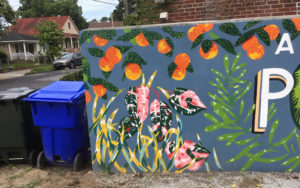 Our June 24 mystery, “Maybe the toughest yet,” was, in fact, so tough that it almost — almost — stumped veteran sleuth George Graf. Most who guessed correctly seemed to know the mural was part of the Francis Street parking lot at Artist and Craftsman Supply, 981 King Street in Charleston, which is just around the corner from Rodney Scott’s Barbecue. Seems like these folks repaint the mural every few months — which added to the complexity of the challenge. Maybe the new mystery above will be a little less difficult. Happy Fourth!
Our June 24 mystery, “Maybe the toughest yet,” was, in fact, so tough that it almost — almost — stumped veteran sleuth George Graf. Most who guessed correctly seemed to know the mural was part of the Francis Street parking lot at Artist and Craftsman Supply, 981 King Street in Charleston, which is just around the corner from Rodney Scott’s Barbecue. Seems like these folks repaint the mural every few months — which added to the complexity of the challenge. Maybe the new mystery above will be a little less difficult. Happy Fourth!
Congratulations to these alert sleuths: Scott Watson, Jalen Johnson and Cara Leepson, all of Charleston; Mary Hunter Russell of Belmont, N.C.; and Graf, who lives in Palmyra, Va.
- Send us a mystery: If you have a photo that you believe will stump readers, send it along (but make sure to tell us what it is because it may stump us too!) Send it along to editor@charlestoncurrents.com.
HISTORY: The King’s Highway
The King’s Highway, sometimes called the King’s High Road, was a post road that stretched from Savannah, Georgia, to St. George’s Fort on the Kennebec River in Maine, linking all colonies together after 1750. In time of war it was used to move militia, supplies, and British soldiers from one colony to another. The intercolonial road originated as a series of Native American trails, which were joined together and gradually enlarged to support animal, wagon, and stagecoach traffic. The segments were built at different times by the individual colonies during the seventeenth and eighteenth centuries. Even at its best, the condition of the route was seldom good. Narrow roads, ruts, mud, obstructions, and poorly maintained bridges and ferries were just a few of the inconveniences to be expected. The section between Wilmington and Charleston was judged by some travelers to be “the most tedious and disagreeable of any on the Continent.”
The South Carolina section of the King’s Highway, built between 1739 and 1750, crossed the North Carolina line just above Little River on its way to Georgetown. It then skirted the Santee delta before passing through Jerveyville (McClellanville) to reach Charleston. The route to Savannah likewise followed the higher ground away from the coast in order to avoid the Edisto, Combahee, and Broad River basins and did not pass an important settlement until it stopped at Purrysburg on the Savannah River. While individuals could travel on foot or by horse, wagon, or carriage, the easiest and most economical mode was by post stagecoach. The driver was responsible for repairs and for fresh horses, accommodations, and food, usually to be found at inns every seven to ten miles along the way. In the twentieth century much of this road became utilized as U.S. Highway 17.
— Excerpted from an entry by Louis P. Towles. This entry may not have been updated since 2006. To read more about this or 2,000 other entries about South Carolina, check out The South Carolina Encyclopedia, published in 2006 by USC Press. (Information used by permission.)
CALENDAR: Celebrating the Fourth of July
Staff reports | There are endless ways to celebrate the nation’s independence Thursday, ranging from cheering the annual Salute from the Shore flyover along the coast (about 1:10 p.m. to 1:24 p.m. along the Charleston County coast) to enjoying fireworks, which can be watched during celebrations at Patriots Point, Isle of Palms, Sullivan’s Island, North Charleston, Summerville, Folly Beach and Edisto Beach. We continue to maintain that the best place to see lots of fireworks is someplace up high, such as the round Holiday Inn on the Ashley River in Charleston.
Here are some of the events from which you can pick:
![]() Knock it out of the park: You can watch fireworks on July 3 at Joe Riley Park after a minor league baseball game between the Charleston RiverDogs and the Augusta GreenJackets. Game starts at 6:35 p.m. Buy tickets.
Knock it out of the park: You can watch fireworks on July 3 at Joe Riley Park after a minor league baseball game between the Charleston RiverDogs and the Augusta GreenJackets. Game starts at 6:35 p.m. Buy tickets.
Daytime historic celebration: 10 a.m. to 4 p.m., July 4, Middleton Place, 4300 Ashley River Road, Charleston. Families can spend their Fourth of July at the home of a signer of the Declaration of Independence. Readings of the Declaration and interactive demonstrations will take place throughout the day, including meeting a Revolutionary soldier, colonial drafts, games and a hands-on military drill. Cost is regular admission. More.
Fireworks dinner cruise: Boards 6:30 p.m., July 4, at Aquarium Wharf, downtown Charleston. The cruise will last through about 10 p.m. You can experience the Charleston harbor at her finest while enjoying a grand four-course dinner, a cash bar, live entertainment, dancing and spectacular view of the fireworks from Patriots Point. Cost: $88 per adult. More info.
Uncle Sam Jam: Gates open at 7 p.m., July 4, Mount Pleasant Pier, 71 Harry M. Hallman Jr Blvd, Mount Pleasant. Dance to live music from Dave Landeo & The Sol Beats as they perform at the end of the pier. At the foot of the Arthur Ravenel Jr. Bridge, stretching 1250 feet out into Charleston Harbor, the scenic Mount Pleasant Pier will be a great spot to view the area’s best fireworks displays and celebrate Independence Day. Tickets are limited; $10 at gate or buy online. Beverages will be available for purchase on site; treats and snacks will also be on hand at the pier’s Riverwatch Cafe and Gift Shop. Outside alcohol and coolers are prohibited.
Celebrate at The Watch: 7 p.m. to 11 p.m., July 4, The Watch at The Restoration hotel, 79 Wentworth St. Charleston. Enjoy classic barbecue, drinks and live music along with an incredible view of the fireworks. Adult tickets: $75. More.
Patriots Point Fireworks Blast: Tickets are sold out to enjoy the July 4 fireworks from aboard the USS Yorktown, but it’s free to watch from the land. Learn more here.
Also on the calendar:
Events at the Gaillard. Check out these awesome coming events at the Charleston Gaillard Center, 95 Calhoun St., Charleston:
How Did This Get Made — LIVE! 7:30 p.m., July 18. Have you ever seen a movie so bad, it’s good? Paul Scheer (The League, Black Monday), Jason Mantzoukas (The League, Brooklyn 99) and June Diane Raphael (Grace & Frankie, Long Shot) are experts in the best of the worst of cinema. Live episode of the trio’s podcast are a truly unique experience allowing the audience to participate through questions to the hosts, creating impromptu songs for segments and viewing one-of-a-kind clips. Tickets are $38 to $78.
Jennifer Holliday: 4 p.m. Aug. 2. The Grammy and Tony award-winning singer and actor, Jennifer Holliday, shows her amazing voice for a one-hour singing performance to close out the 2019 Lowcountry Mental Health Conference. She will also be taking time to share her personal story and struggles with depression while talking about the work she is doing to bring awareness to mental health issues. Tickets are $28.
John’s Island Book Sale: Starts at 9 a.m. on July 26 and 27, John’s Island Regional Library, 3531 Maybank Highway, Johns Island. John the Charleston Friends of the Library to browse through more than 10,000 gently-used books, CDs, DVDs, and audio books at prices that can’t be beat.More info: www.CharlestonLibraryFriends.org.
Early morning bird walks at Caw Caw: 8:30 a.m. every Wednesday and Saturday, Caw Caw Interpretive Center, Ravenel. You can learn about habitats and birds, butterflies and other organisms in this two-hour session. Registration is not required, but participants are to be 15 and up. $10 per person or free to Gold Pass holders. More: http://www.CharlestonCountyParks.com.
AREA MARKETS
TUESDAYS. The Mount Pleasant Farmers Market is every Tuesday from 3:30 p.m. to 7 p.m. at the market pavillion at Moultrie Middle School, 645 Coleman Blvd., Mount Pleasant. Free parking. Lots of activities. More info.
WEDNESDAYS. The West Ashley Farmers Market is every Wednesday from 3 p.m. to 7 p.m. in Ackerman Park off Sycamore Avenue in West Ashley. The last week of the market will be the first week of October. More.
FRIDAYS/SATURDAYS: Night Market. Every Friday and Saturday from 6:30 p.m. to 10:30 p.m. for the rest of the year, you can shop with 108 vendors, including artists and craftsmen, at the night market on Market Street between East Bay and Church streets. It’s more than four blocks of local shopping and fun. Free.
SATURDAYS: Johns Island Farmers Market operates each Saturday from 9:30 a.m. to 1:30 p.m. year-round with more than 50 local farmers and vendors, food trucks, music and more. The market is located on the campus of Charleston Collegiate School, 2024 Academy Road, Johns Island
SATURDAYS: The Charleston Farmers Market is open 8 a.m. to 2 p.m. in Marion Square each Saturday through Nov. 30. More info.
- If you have an event to list on our calendar, please send it to feedback@charlestoncurrents.com for consideration. The calendar is updated weekly on Mondays.
If you like what you’ve been reading, how about considering a contribution so that we can continue to provide you with good news about Charleston and the Lowcountry. Interested? Just click the image below.
Now out in paperbrack, err, paperback
 We Can Do Better, South Carolina! offers incisive commentaries by editor and publisher Andy Brack on the American South, the common good and interesting South Carolina leaders, such as former U.S. Sen. Fritz Hollings, civil rights advocate Septima Clark, former S.C. Gov. David Beasley and more. There also are discussions on civil rights struggles with which the Palmetto State continues to grapple. as well as commentaries on politics, governments, the hangovers of South Carolina’s past and her future opportunities.
We Can Do Better, South Carolina! offers incisive commentaries by editor and publisher Andy Brack on the American South, the common good and interesting South Carolina leaders, such as former U.S. Sen. Fritz Hollings, civil rights advocate Septima Clark, former S.C. Gov. David Beasley and more. There also are discussions on civil rights struggles with which the Palmetto State continues to grapple. as well as commentaries on politics, governments, the hangovers of South Carolina’s past and her future opportunities.
We Can Do Better, South Carolina! is available for $14.99 in paperback or as a Kindle book for $7.99. Click here to purchase your copy. A paperback version will be ready for order isoon.
- If you have a comment or questions about the book, please let us know at: editor@charlestoncurrents.com
OUR UNDERWRITERS
Charleston Currents is an underwriter-supported weekly online journal of good news about the Charleston area and Lowcountry of South Carolina.
- Meet our underwriters
- To learn more about how your organization or business can benefit, click here to contact us. Or give us a holler on the phone at: 843.670.3996.
OUR TEAM
Charleston Currents offers insightful community comment and good news on events each week. It cuts through the information clutter to offer the best of what’s happening locally.
- Mailing address: P.O. Box. 22261 | Charleston, SC 29413
- Phone: 843.670.3996
Charleston Currents is provided to you weekly by:
- Editor and publisher: Andy Brack, 843.670.3996
- Contributing editor, common good, Fred Palm
- Contributing editor, money: Kyra Morris
- Contributing editor, Palmetto Poem: Marjory Wentworth
- Contributing editor, real estate: Digit Matheny
- Contributing photographer: Rob Byko
SUBSCRIBE FOR FREE
Subscriptions to Charleston Currents are free.
- Click here to subscribe.
- Unsubscribe. We don’t want to lose you as a reader of Charleston Currents, but if you must unsubscribe, you will have to do it through the email edition you receive. Just go to the bottom of any of your weekly newsletters and click the “unsubscribe” function. If that doesn’t work, please send us an email with the word “unsubscribe” in the subject line.
- © 2008-2019, Statehouse Report, LLC. All rights reserved. Charleston Currents is published every Monday by Statehouse Report LLC, PO Box 22261, Charleston, SC 29413.




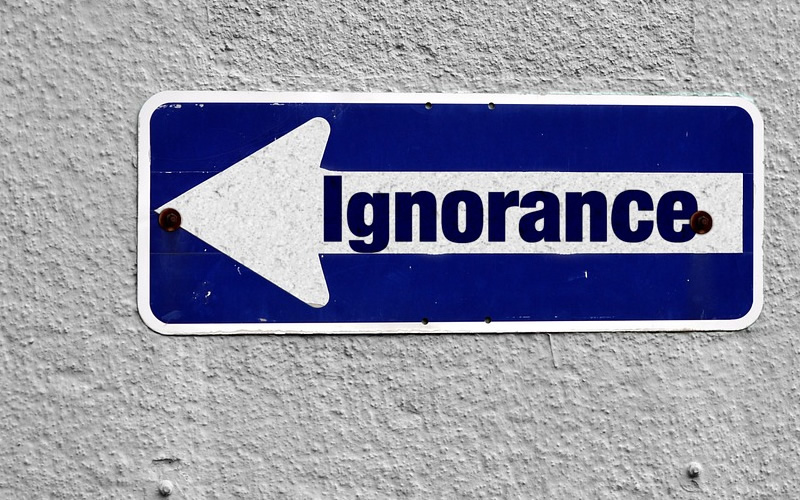
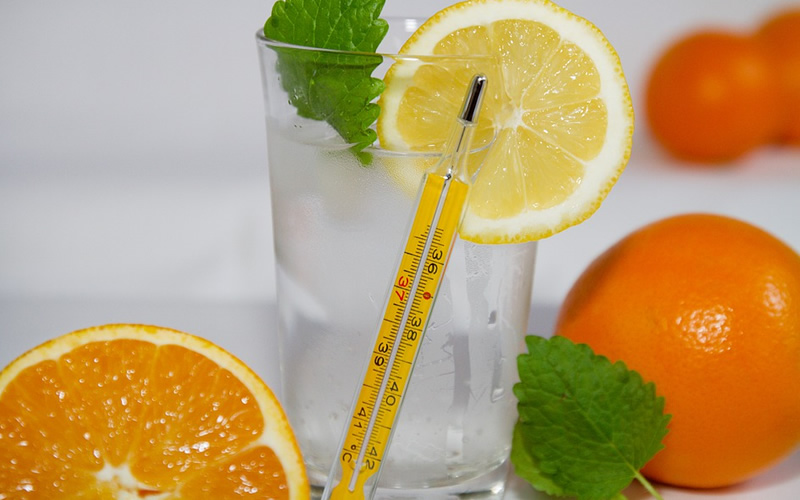
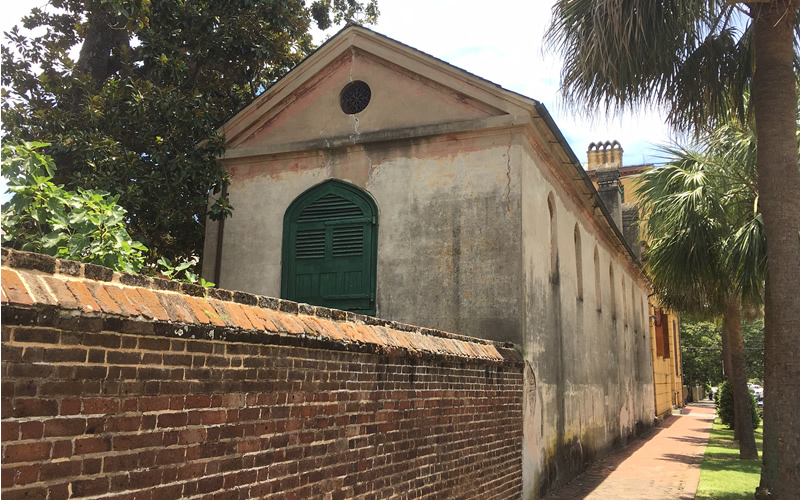
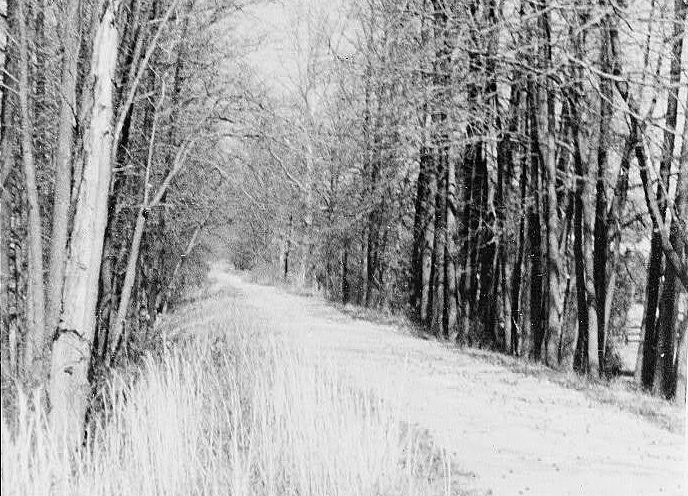


 We Can Do Better, South Carolina!
We Can Do Better, South Carolina!
























